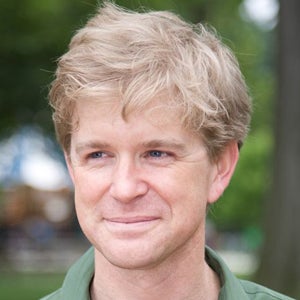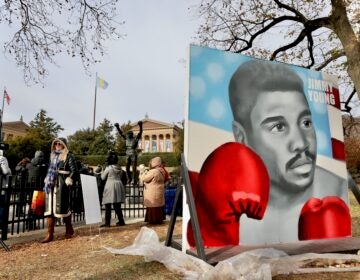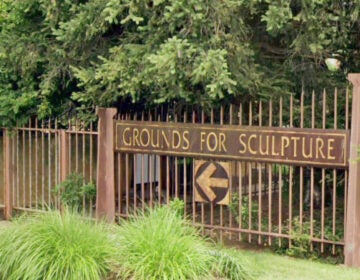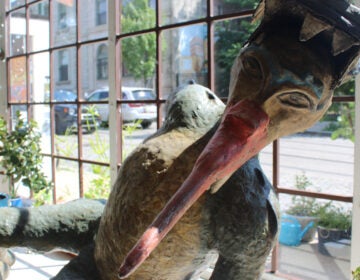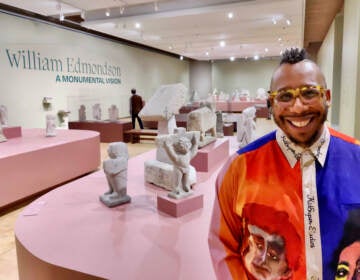Philadelphia sculptor casts a 10-foot Muhammad Ali on the 60th anniversary of his famous victory
Zenos Frudakis renders Muhammad Ali’s 1965 win over Sonny Liston for the town where it happened.
Listen 1:21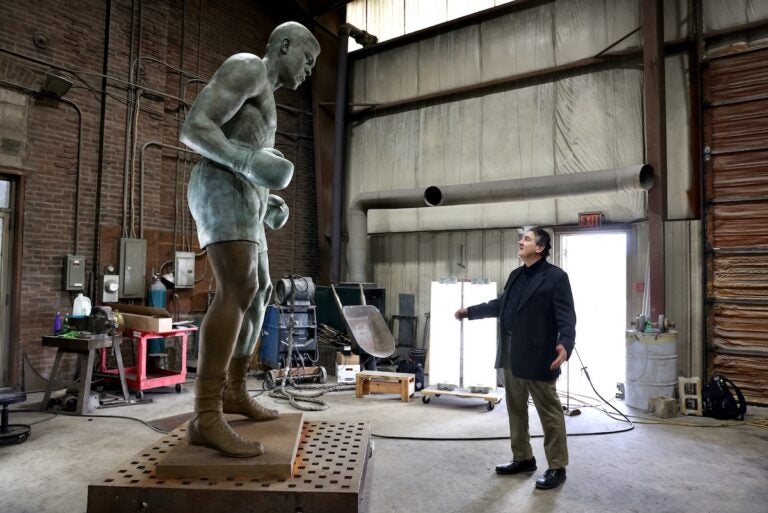
Zenos Frudakis stands beside his 10-foot-tall statue of Muhammad Ali at Laran Bronze Foundry in Chester, Pa. (Emma Lee/WHYY)
From Philly and the Pa. suburbs to South Jersey and Delaware, what would you like WHYY News to cover? Let us know!
Sixty years ago today, a 23-year-old named Cassius Clay, later known as Muhammad Ali, stood over world heavyweight champion Sonny Liston, one of the most intimidating boxers ever and the one strongly favored to win, and shouted “Get up and fight, sucka!”
That moment on May 25, 1965, in Lewiston, Maine, has become one of the most iconic in all of sports.
It is now cast in bronze.
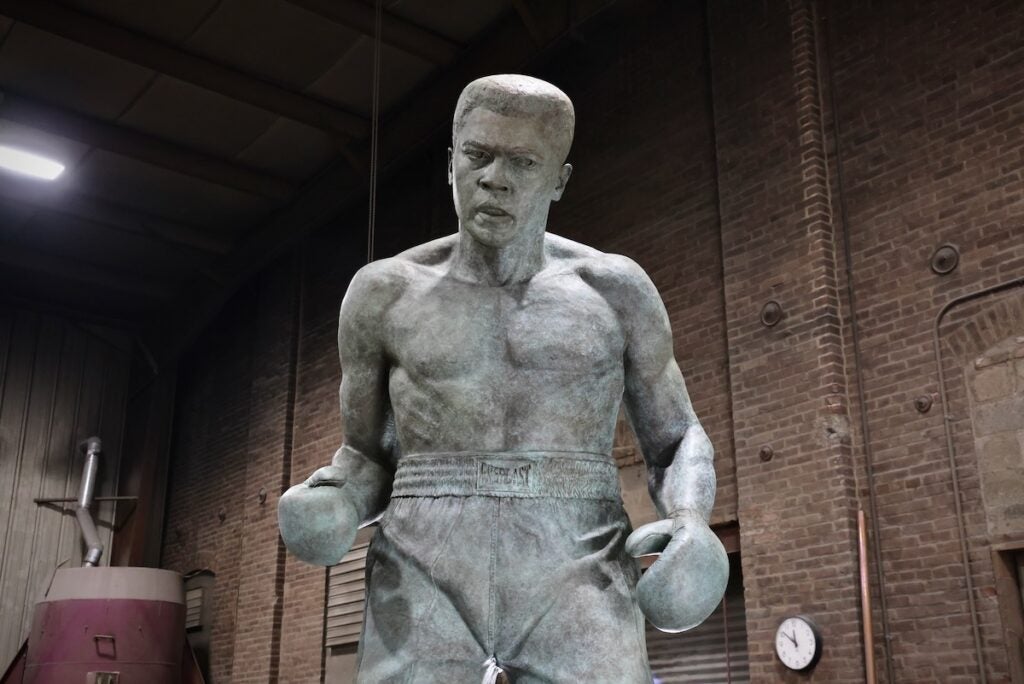
Philadelphia-based sculptor Zenos Frudakis crafted a 10-foot statue of Muhammad Ali at the behest of the city of Lewiston. The statue will be transported there this week and installed in time for a weekend celebration.
“He was a good-looking man. I wanted to show some of that, but also show something in his eyes,” said Frudakis while overseeing the final application of patina at the Laran Bronze Foundry in Chester, Pennsylvania.
“You can see that he’s coming to get you,” he said. “He was scared. The first time he fought Liston — he said it later — it was the only time in his life he was scared. He tried to overcome that.”
Frudakis did not faithfully recreate the pose Ali struck over the body of Liston that was immortalized by photographers. Instead he consulted hundreds of images of Ali in the ring to compose his own version of the young boxer looking threatening and victorious, as though daring his next challenge to stand up.
Frudakis’ Ali has his fists raised to his sides, exposing his formidably muscular torso. He stood the fighter on the balls of his feet, suggesting the butterfly dance in the ring Ali was famous for.
“Like Michelangelo’s ‘David’ was a symbol of the small guy standing up against the giant,” he said. “I want this to be a symbol for the town.”
Frudakis, 73, is a prominent and prolific sculptor known for his “Freedom” sculpture of a figure emerging from a stone building, and a now-controversial statue of former Philadelphia Mayor Frank Rizzo. He has made busts of everyone from Supreme Court Justice Ruth Bader Ginsburg to cooking show host Jacques Pépin.
He was 14 years old in 1965 when the Ali-Liston fight took place. Being from a family of amateur boxers, Frudakis said he was well aware of the match at the time.

The fight was memorable not only for the now-famous image of Ali standing over his felled opponent while cocking his punching arm, but for the controversy it generated. Ali’s so-called “phantom punch” may not have landed, and the count by the referee may have been botched, leading some to believe the fight may have been fixed. The allegations were never substantiated.
The bout was supposed to be fought in Boston but fell through due to legal troubles. Seeing an opportunity, the governor of Maine floated a youth center’s ice rink in Lewiston as an alternative. Boxing promoters leapt at it.
Both the town and Ali shared a similar moment: An underdog got an unexpected win that was heard around the world.
“This is more than a tribute to a great athlete,” said Charlie Hewitt, of Lewiston, who co-commissioned the statue. “It’s a recognition of resilience, transformation and dignity.”
Lewiston recently suffered a major tragedy. In 2023, an Army reservist killed 18 people at a bar and nearby bowling alley. It was the worst mass shooting in Maine history.
“After that, with those shootings, they want something positive,” Frudakis said. “They want the embodiment of something optimistic, which is what Ali represents for them.”
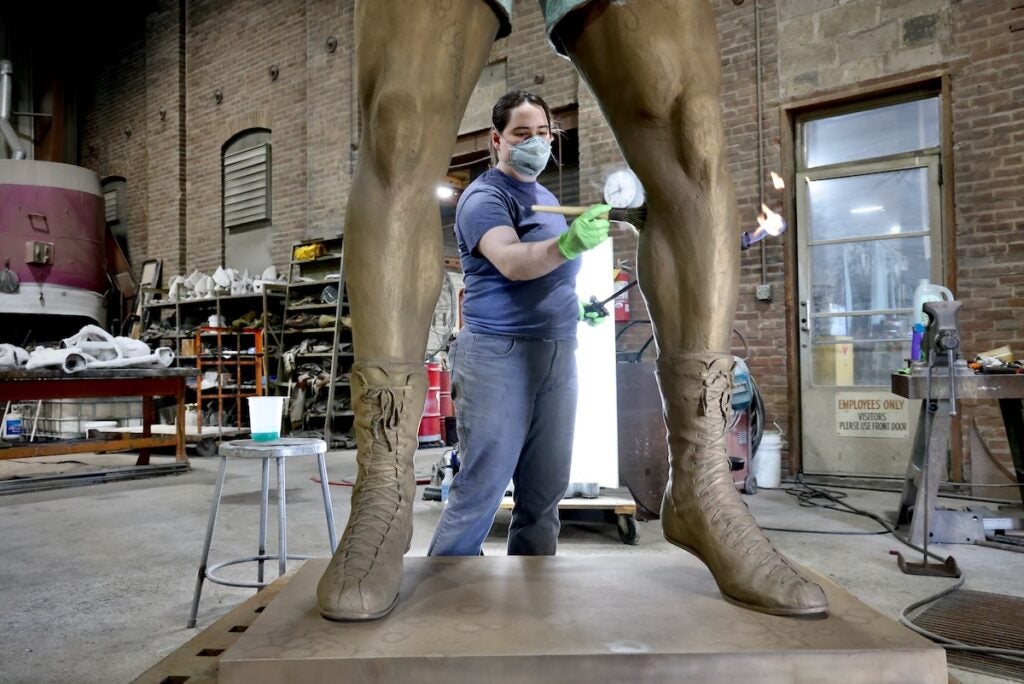
The commission of the statue was spearheaded by Hewitt and Lewistown developer Tom Platz. It will be placed in front of Platz’s Bates Mill Complex, a large mixed-use development of residences and business in what used to be a 19th century textile factory.
The Ali statue will act as a gateway into Lewiston for travelers coming across the Androscoggin River from neighboring Auburn, about 450 miles from where it was born in Chester.

Saturdays just got more interesting.
WHYY is your source for fact-based, in-depth journalism and information. As a nonprofit organization, we rely on financial support from readers like you. Please give today.


